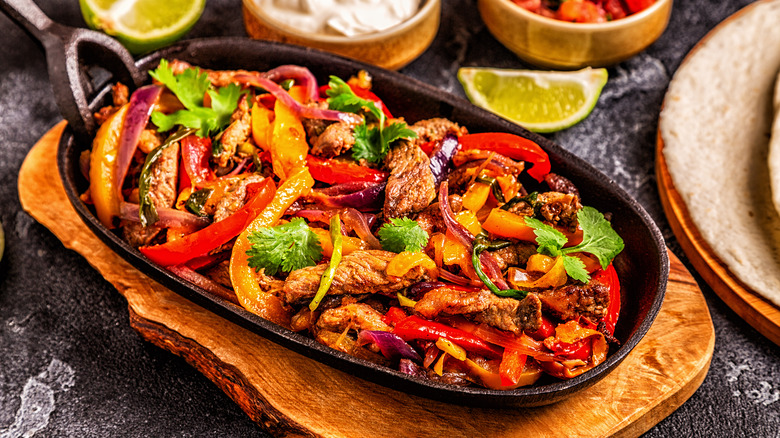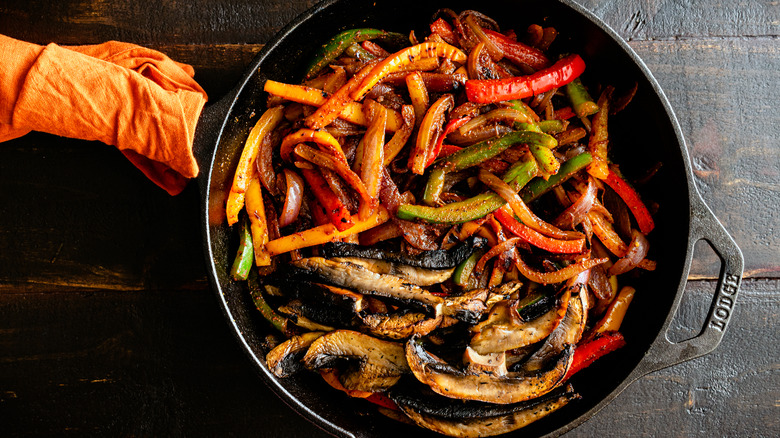Why You May Want To Skip The Fajitas At Mexican Restaurants
Fajitas announce their presence before they even arrive at your table with their loud sizzle and the smell of sautéed meat and peppers. While a Tex-Mex creation, fajitas are a Mexican restaurant stable around the United States that generally includes a protein such as seasoned steak, chicken, or shrimp and bell peppers and onions.
The history of the fajita is believed to go back to when ranch workers would grill meat over a campfire and then wrapped the cooked meat in a tortilla, according to Mexicali Blue. Coming from the Spanish words "faja" for "belt" or "girdle," fajitas were likely first eaten in the Rio Grande Valley of South Texas. And tex-Mex cooking, along with its inexpensive dishes like chili con carne and nachos, began to grow in popularity in San Antonio, Texas, in the 1880s, reports History.
Even though fajitas may not be an authentic Mexican food, per Culture Trip, that's not the main reason some chefs say the dish shouldn't be ordered at a Mexican restaurant.
Make fajitas at home
While steak is the most authentic protein for fajitas thanks to the cattle ranch history of the dish, per What's Cooking America, recipes abound for alternative meats like venison or non-meat options like portobello mushrooms. And most are relatively easy to make, which is why chef Saul Montiel told Insider that fajitas should be enjoyed at home and not ordered when dining at a Mexican restaurant. Montiel contends that even beginner chefs can easily make a tantalizing plate of fajitas in their kitchen; So spending money on them at a restaurant isn't the best use of your hard-earned cash. If a diner's heart is set on the sizzling meat and peppers of fajitas, Montiel suggests asking the restaurant staff if they can make the fajitas with a specialty meat or provide homemade tortillas in order to elevate the dish.
Another reason to pass on the fajitas for the chicken enchiladas with mole sauce is that often the steak used for fajitas is not authentic skirt steak, but is instead alternative cuts that are tougher and treated with enzymes to tenderize them, per Grub Street.
Ultimately it's a personal choice on where and how to eat fajitas, but there is no denying that the sizzle adds a little excitement to dinner.

